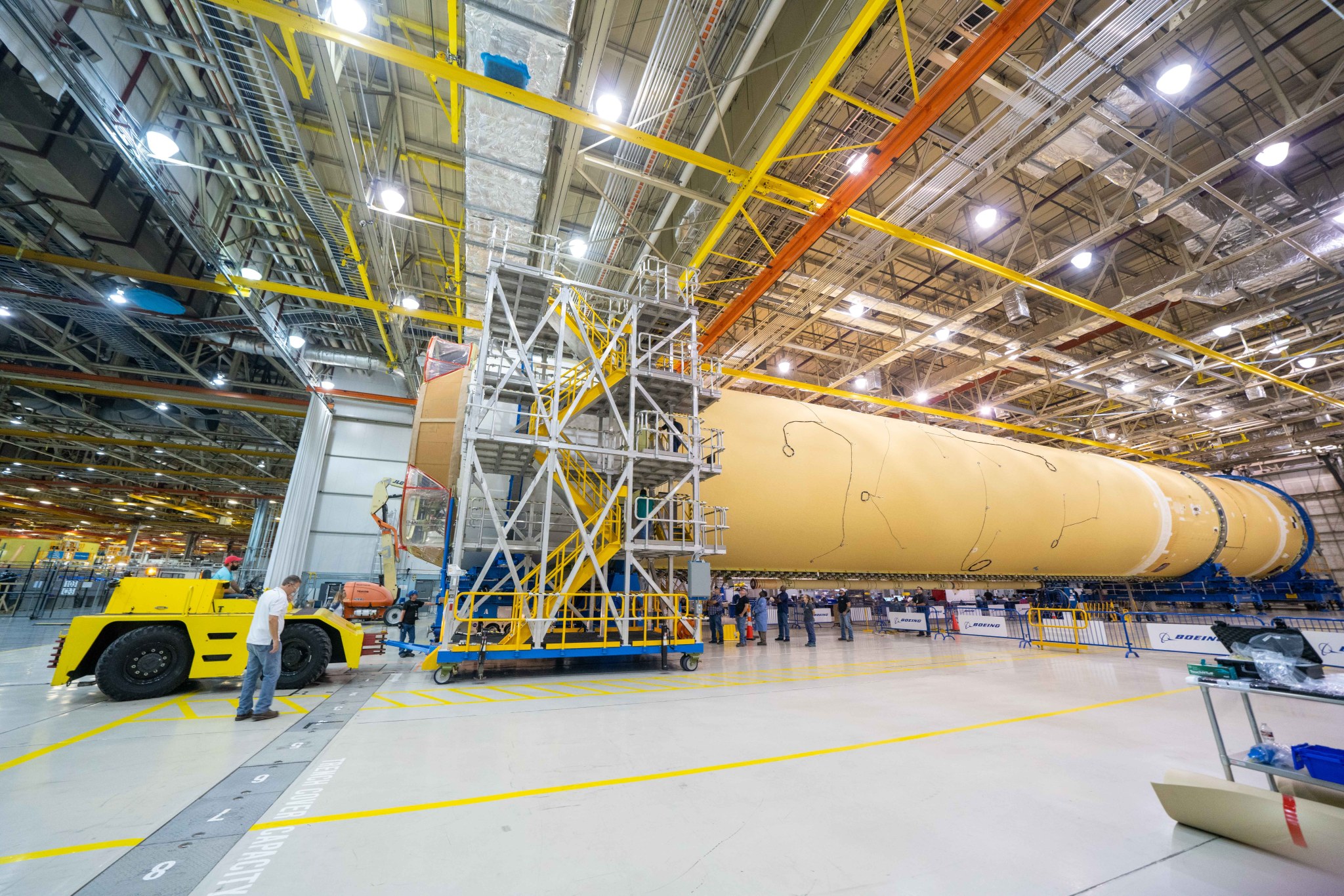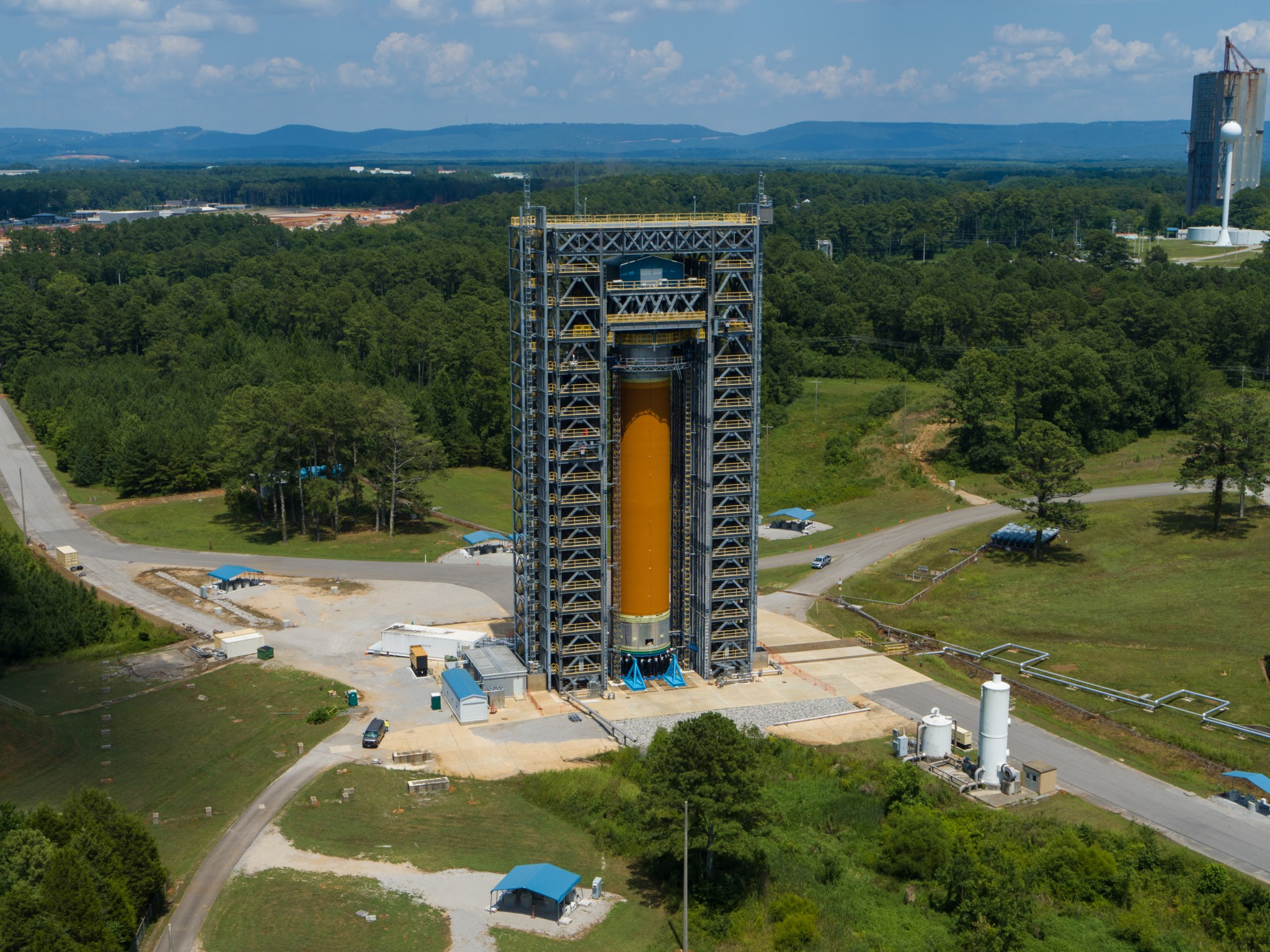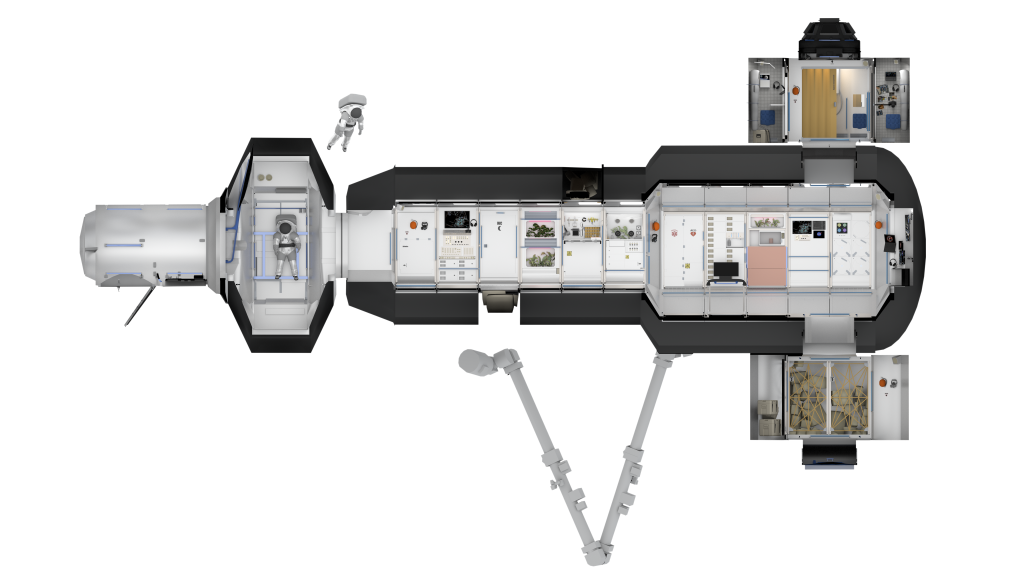
NASA finished assembling and joining the main structural components for the largest rocket stage the agency has built since the Saturn V that sent Apollo astronauts to the Moon. Engineers at the agency’s Michoud Assembly Facility in New Orleans connected the last of the five sections of the Space Launch System (SLS) rocket core stage on Sept. 19. The stage will produce 2 million pounds of thrust to send Artemis I, the first flight of SLS and NASA’s Orion spacecraft to the Moon.
“NASA has achieved a historic first milestone by completing the final join of the core stage structure for NASA’s Space Launch System, the world’s most powerful rocket,” said Julie Bassler, the NASA SLS stages manager. “Now, to complete the stage, NASA will add the four RS-25 engines and complete the final integrated avionics and propulsion functional tests. This is an exciting time as we finish the first-time production of the complex core stage that will provide the power to send the Artemis I mission to the Moon.”
The last piece added to the stage was the engine section located at the bottom of the 212-foot-tall core stage. To complete the structure, technicians bolted the engine section to the stage’s liquid hydrogen propellant tank, which was recently attached to the other core stage structures. The engine section is one of the most complicated pieces of hardware for the SLS rocket and is the attachment point for the four RS-25 rockets and the two solid rocket boosters that produce a combined 8.8 million pounds of thrust. The engine section also includes vital systems for mounting, controlling and delivering fuel from the stage’s two liquid propellant tanks to the rocket’s engines. This fall, NASA will work with core stage lead contractor, Boeing, and the RS-25 engine lead contractor, Aerojet Rocketdyne, to attach the four RS-25 engines and connect them to the main propulsion systems inside the engine section.
“Boeing expects to complete final assembly of the Artemis I core stage in December,” said Jennifer Boland-Masterson, Boeing operations director at MAF. “After we deliver the stage, NASA will transport it on the agency’s Pegasus barge from Michoud to NASA’s Stennis Space Center near Bay St. Louis, Mississippi, for Green Run testing. Our team here at Michoud will continue work with NASA to build, outfit and assemble the core stage for Artemis II, the first mission that will send astronauts to orbit the Moon. Lessons learned and innovations developed in building the first core stage are making the second one progress much faster.”
During Green Run testing, engineers will install the core stage into the B-2 Test Stand at Stennis for a series of tests that will build like a crescendo over several months. This will be the first fully fueled test of this brand new rocket stage. Many aspects will be carried out for the first time, such as fueling and pressurizing the stage, and the test series culminates with firing up all four engines to demonstrate that the engines, tanks, fuel lines, valves, pressurization system, and software can all perform together as they will on launch day.

The SLS team also achieved another recent milestone by completing structural testing for the stage’s liquid hydrogen tank. The testing confirmed that the structural design for the tank on the rocket’s initial configuration, called Block 1, can withstand extreme conditions during launch and flight. Teams at NASA’s Marshall Space Flight Center in Huntsville, Alabama, put a test version of the tank through the paces during 37 separate test cases that exceed what engineers expect the SLS rocket to experience. The final test used 80,000 gallons of liquid nitrogen to simulate the cryogenic conditions, or extreme cold, that the liquid hydrogen tank will experience in flight. Testing will continue later this year to show the tank’s structural design is adequate for future designs of the vehicle as it evolves to a Block IB configuration and missions with even greater forces.
In addition to providing propellant and power to get the SLS rocket and Orion spacecraft to space, the core stage houses the flight computers and avionics components that control the first 8 minutes of flight. The avionics system, including the flight computers, completed integrated system level qualification testing showing the components all work together to control the rocket in the Software Integration and Test Facility (SITF) at Marshall. The next step is to test the flight software with all the ground system software, Orion and launch control in the Systems Integration Laboratory at Marshall.
“NASA and our contractor teams are making tremendous progress on every aspect of manufacturing, assembling and testing the complex systems needed to land American astronauts on the lunar surface by 2024,” Bassler said. “I am confident this hard work will result in a rocket that can provide the backbone for deep space transportation to the Moon and ultimately to Mars.”
NASA is working to land the first woman and the next man on the Moon by 2024. SLS and NASA’s Orion spacecraft, along with the Gateway in orbit around the Moon, and the Human Landing System are the backbone for deep space exploration. SLS is the only rocket that can send Orion, astronauts and supplies to the Moon in a single mission.
For more on NASA’s SLS, visit:

























